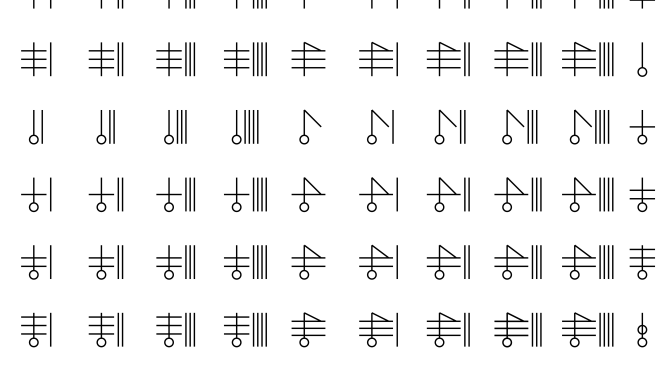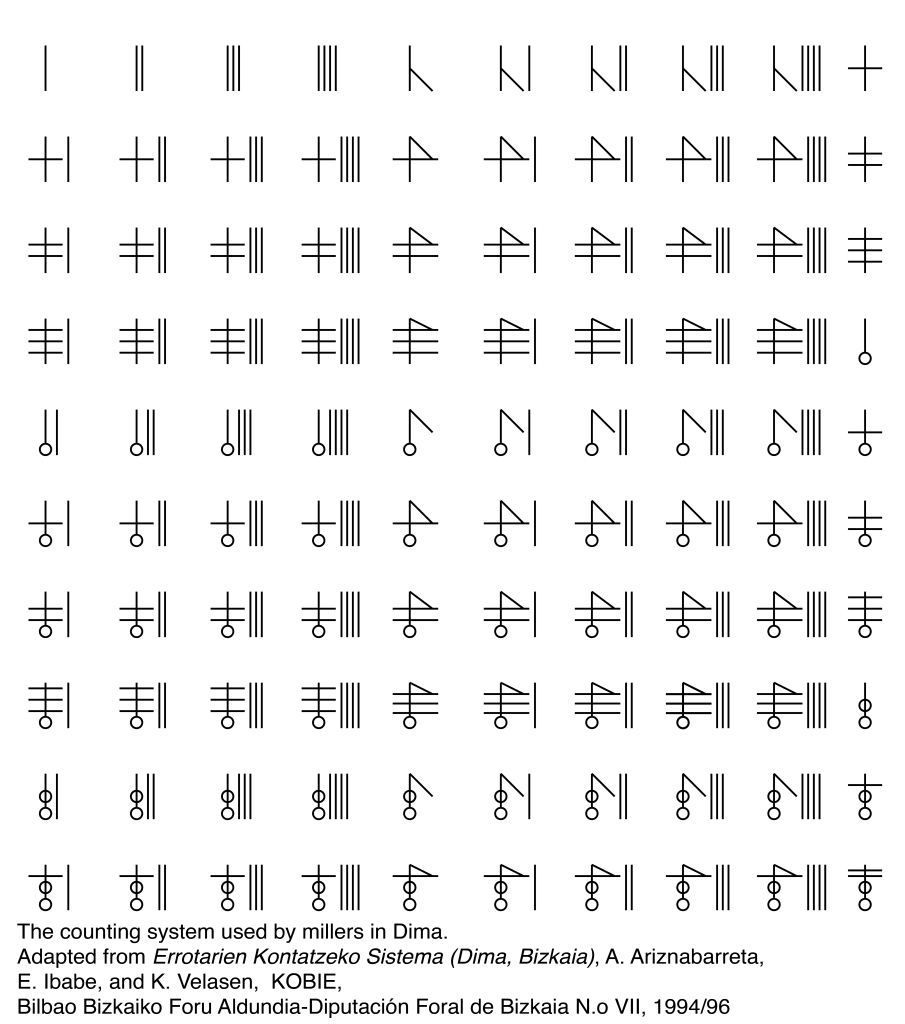Counting is one of the most elementary human tasks, one of the first things we learn as children, rattling off numbers as we hold up our fingers to record our count. In most of the western world, we count by tens, a natural extension of our ten fingers (and thumbs). Basque is different, with a system based on twenties (this doesn’t mean Basques took off their shoes to get to twenty). However, that is only one of the intriguing aspects of Basque numbers.
- It is a well known, and often pointed to, fact that the Basque number system is based on 20 rather than 10; that it is vigesimal. The first ten digits (1-10) have their own names, the teens (11-19) are, for the most part, 10+X where X is a single digit, but then comes twenty, hogei in Basque. From then on, to 100, the counting goes as 20+X, where X is a number between 1-19. So, 35 is literally expressed as 20+10+5 (hogeita hamabost).
- But, that is only the beginning. First, there is the question of where the names for the numbers come from. It’s hard to be certain, and finding etymologies of the names for the Basque digits – bat, bi, hiru, lau, … – requires a lot of linguistic reconstruction, sleuthing, and pure guess work. In their recent paper Reconstruction of the Ancient Numeral System in Basque Language, Gomez-Acedo and Gomez-Acedo provide possible etymologies for the first ten numbers in Basque, relating them to the words eri and ahur, finger and palm, respectively. They come to the conclusion that, for example, bat originally meant something like “there is a finger,” hiru meant “two fingers in the palm” (meaning three are up), and bost meant “see the whole hand.” I’m no linguist, so can’t comment on how solid these proposed etymologies are, but it is an interesting hypothesis.
- The base-twenty number system was used by Basque sheepherders to count their sheep. As detailed by Araujo in his paper Counting Sheep in Basque, two Basque sheepherders would work together to count the flock. One would hold five stones or nails – or really anything small – in one hand. As he counted, when he hit twenty, he would move one of the stones to his other hand. When all five had been moved, that meant 100 sheep had been counted and he would yell out “ehun!” – one hundred – to the other herder, who would then make a mark on a stick. When they were all done, the total number of sheep would be however many hundreds indicated by the marks on the stick, plus however many twenties represented by the stones moved from one hand to the other, and wherever number between 1-19 the first herder was at when the last sheep went through the gate.
- While, like much of the world, Basque uses the Arabic numeral system to actually write out numbers, Basque millers had their own system involving a series of lines and circles. The details varied from region to region, but with this system they could easily indicate numbers up to 100 with seemingly complex patterns. They could even account for fractions. The system used in Dima seems to have been based on 40 rather than 20, with 40 having a unique symbol but 20 being essentially two 10s.
Primary sources: Please see the various links in the post.
Discover more from Buber's Basque Page
Subscribe to get the latest posts sent to your email.




Quite interesting; for this is the first article I have had the opportunity to read about the vigesimal numerical system.
Mila ezker Blas
I imagine there has to be more information out there in Basque or Spanish, but this is the little I could dig up online. Very interesting stuff!
Greetings,
Interesting–thank you!!! next time I go home and cross over to a venta to buy my Izarra bottle, I will remember and make sure that I count my change twice!! Monique
Sounds like a plan Monique! 🙂
In Paris, France, there’s an hospital for the blinds, named Quinze-Vingt because it would originaly hold 300 people. It was built around 1260 under King Saint Louis. It seems that vigesimal counting was generaly used in middle age.
Thank you Jacques. I don’t know French, but I’ve seen that maybe French had a vigesimal counting system too at one point, with some remnants still remaining. Thanks for the information!